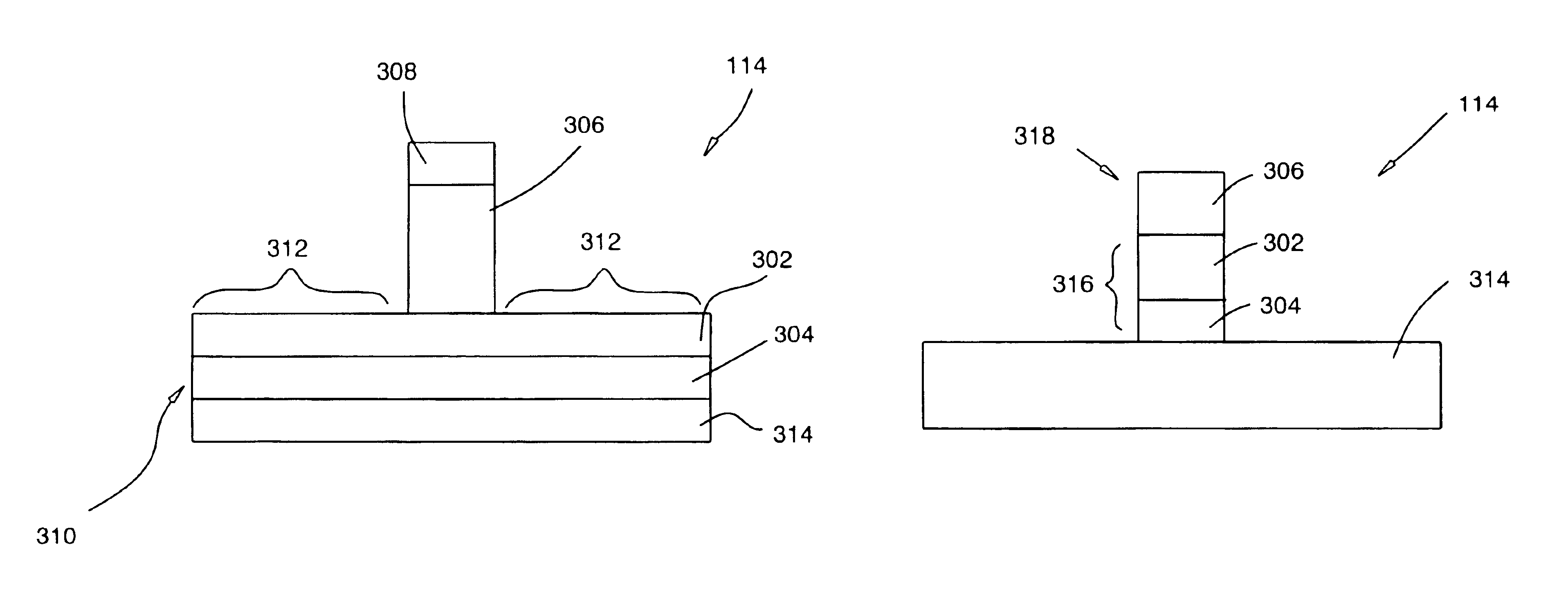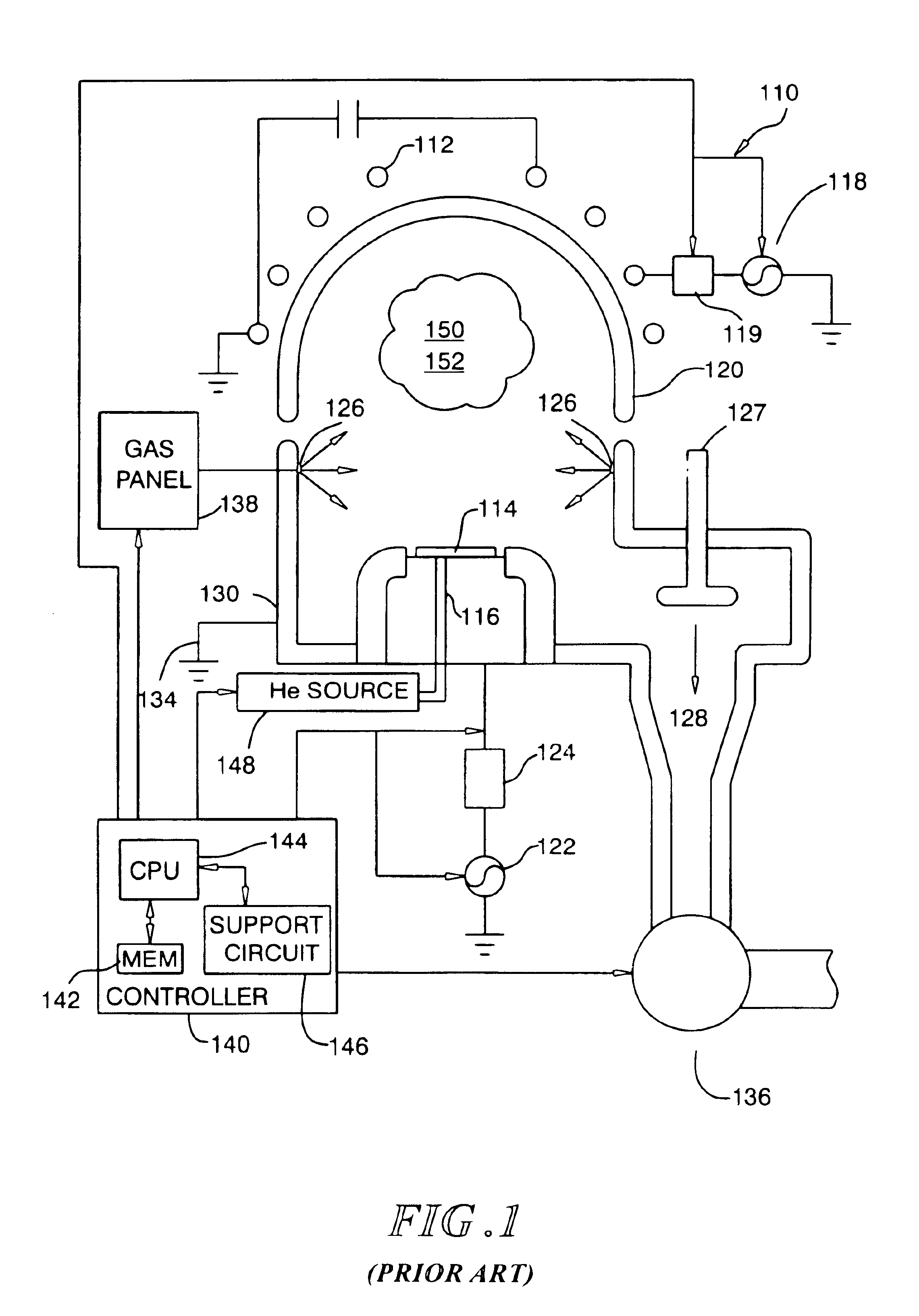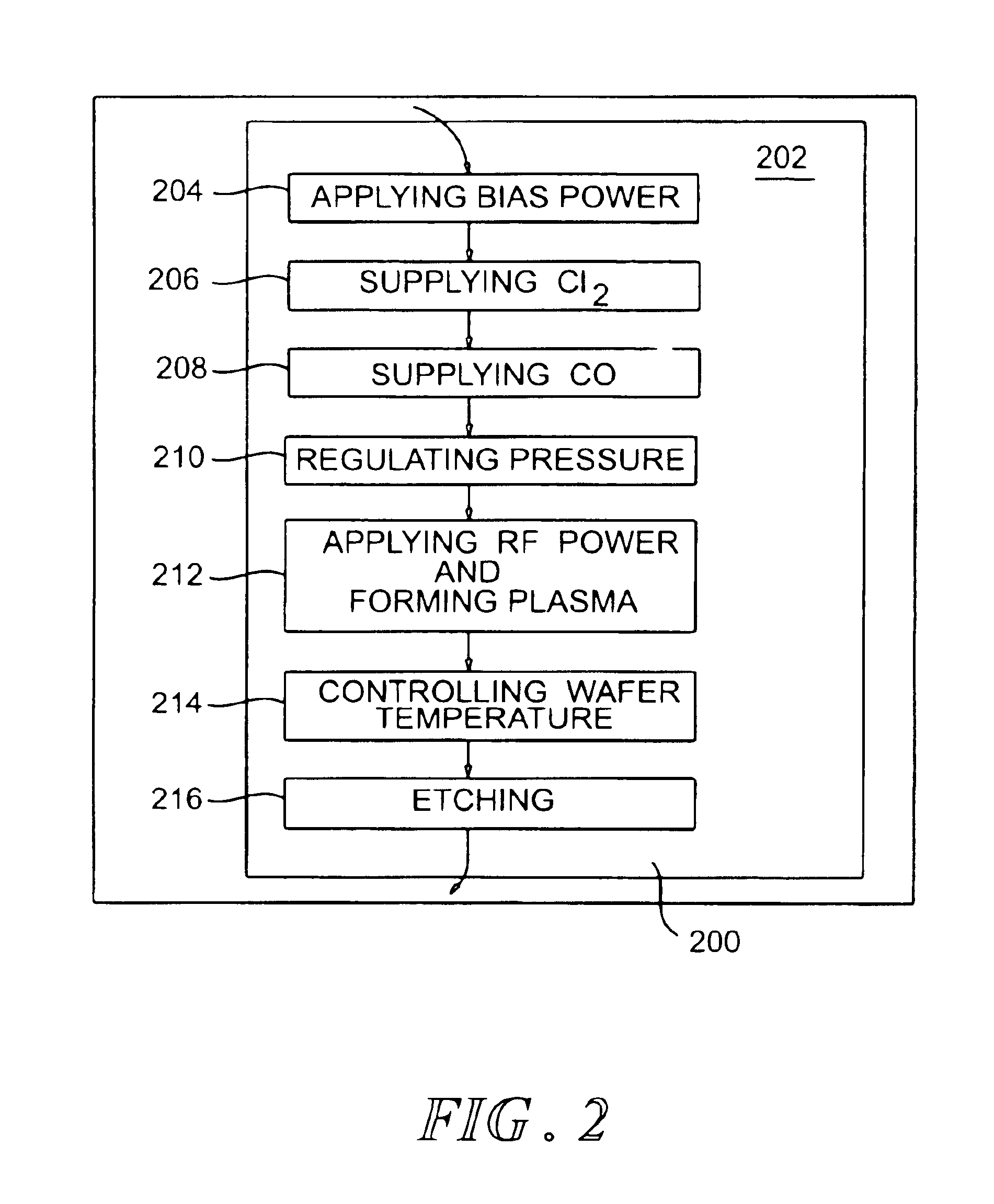Method of plasma etching of high-K dielectric materials with high selectivity to underlying layers
a dielectric material and plasma etching technology, applied in semiconductor/solid-state device manufacturing, basic electric elements, electric apparatus, etc., can solve the problems of affecting the operation of the transistor, affecting the quality of the etching, and affecting the etching effect of the etching process, etc., and achieves the effect of reducing the cost of etching
- Summary
- Abstract
- Description
- Claims
- Application Information
AI Technical Summary
Benefits of technology
Problems solved by technology
Method used
Image
Examples
Embodiment Construction
The present invention is a method of etching materials with high dielectric constants (high K materials have dielectric constants greater than 4.0) using a plasma generated from a gas (or gas mixture) comprising gases containing a halogen gas (such as Cl.sub.2, HCl and the like) and a reducing gas (such as carbon monoxide (CO). The high K materials include HfO.sub.2, ZrO.sub.2, Al.sub.2 O.sub.3, BST, PZK, ZrSiO.sub.2, HfSiO.sub.2, TaO.sub.2, and the like. The type of halogen gas is selected to best remove the metal from the dielectric layer and the type of reducing gas is selected to best remove the oxygen from the dielectric layer. The etch process of the present invention can be reduced to practice in a Decoupled Plasma Source (DPS) Centura.RTM. etch system or a DPS-II etch system available from Applied Materials, Inc. of Santa Clara, Calif.
FIG. 1 depicts a schematic diagram of the DPS etch process chamber 110, that comprises at least one inductive coil antenna segment 112, positi...
PUM
| Property | Measurement | Unit |
|---|---|---|
| width | aaaaa | aaaaa |
| width | aaaaa | aaaaa |
| pressure | aaaaa | aaaaa |
Abstract
Description
Claims
Application Information
 Login to View More
Login to View More - R&D
- Intellectual Property
- Life Sciences
- Materials
- Tech Scout
- Unparalleled Data Quality
- Higher Quality Content
- 60% Fewer Hallucinations
Browse by: Latest US Patents, China's latest patents, Technical Efficacy Thesaurus, Application Domain, Technology Topic, Popular Technical Reports.
© 2025 PatSnap. All rights reserved.Legal|Privacy policy|Modern Slavery Act Transparency Statement|Sitemap|About US| Contact US: help@patsnap.com



